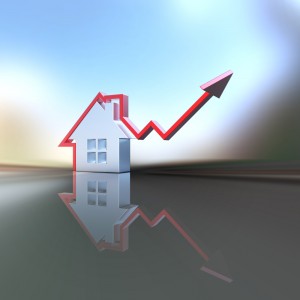Housing starts are up 6.8 percent, according to the May National Association of Home Builders Housing Starts Summary. Starts were bolstered by a large uptick in multi-unit construction and backed by an ever-growing demand. Single-family starts remained steady with 599,000 units in May, while production of apartments and other multi-family dwellings rose 21.6 percent for a combined total of 914,000 units.
While single-family home starts didn’t m ake a huge leap forward, the volume of permits requested by builders continues to demonstrate U.S. consumers’ desire to build and own new homes. The rainy season might also be a contributing factor in the lack of home starts. NAHB Chief Economist David Crowe mentioned weather might be slowing progress on the, however the strength of permits being issued and pulled for future use signals continued recovery in the housing market.
ake a huge leap forward, the volume of permits requested by builders continues to demonstrate U.S. consumers’ desire to build and own new homes. The rainy season might also be a contributing factor in the lack of home starts. NAHB Chief Economist David Crowe mentioned weather might be slowing progress on the, however the strength of permits being issued and pulled for future use signals continued recovery in the housing market.
A 10 percent drop in multi-unit permits caused a drop in overall new permit activity of 3.1 percent. In May 974,000 starts were recorded, according to the May Housing Starts Summary. Single-family permits, however, had their strongest showing in five years with an increase of 1.3 percent, to 622,000 units.
The South and the West led the way in starts, with increases of 17.8 percent and 5.7 percent, respectively. Meanwhile the Housing Starts Summary reported a decline of 13.7 percent in the Midwest followed by the Northeast’s 9 percent dip in production.
Although regionally there were construction declines; inclement weather may have impacted new starts growth. The overall nationwide statistics in the Housing Starts Summary showed positive forward movement. The existing home inventory remains low in most of the country; therefore homebuyers continue to look for builders to fulfill their housing needs. Current trends indicate that many buyers prefer the advantages of new home construction.
For more information on First Preston HT, visit our website at FirstPrestonHT.com.
Sources:
1) http://www.nahb.org/news_details.aspx?newsID=16344
2) http://www.nahb.org/news_details.aspx?sectionID=122&newsID=16341


 More than 70 percent of metropolitan areas qualified as improving markets according to the National Association of Home Builders latest Improving Markets Index. It’s notable that the last time the Pending Home Sales Index reached this level was in April 2010, prior to the expiration of the tax credit for home buyers. While the Pending Home Sales Index doesn’t reflect closed sales, the uptick in pending contracts indicates consumer willingness to invest in the real estate market. Investors and first-time homeowners alike are making moves and finally getting off the proverbial fence.
More than 70 percent of metropolitan areas qualified as improving markets according to the National Association of Home Builders latest Improving Markets Index. It’s notable that the last time the Pending Home Sales Index reached this level was in April 2010, prior to the expiration of the tax credit for home buyers. While the Pending Home Sales Index doesn’t reflect closed sales, the uptick in pending contracts indicates consumer willingness to invest in the real estate market. Investors and first-time homeowners alike are making moves and finally getting off the proverbial fence. more units took a hit, and was down 37.8% from March. Single-family home production made a much smaller decline at 2.1% month-to-month with many experts pointing to lack of supply of materials and available land as the culprit. The bigger picture in April’s Housing Starts Summary is that permits, a major indicator for future construction, are up 35.8% from April 2012, and housing starts for single-family homes are up 13.1% from last year.
more units took a hit, and was down 37.8% from March. Single-family home production made a much smaller decline at 2.1% month-to-month with many experts pointing to lack of supply of materials and available land as the culprit. The bigger picture in April’s Housing Starts Summary is that permits, a major indicator for future construction, are up 35.8% from April 2012, and housing starts for single-family homes are up 13.1% from last year.

 A familiar obstacle, low inventory remains the chief concern for home builders, prospective buyers and Realtors alike, with some agents complaining there just aren’t enough homes in their respective markets to show customers. NAR Chief Economist Lawrence Yun states that “housing starts need to rise at least 50% from current levels” to relieve the current inventory shortage. Yun also indicated that clearer regulatory rules allowing small banks and credit unions to do more construction loans would help shift housing starts in the right direction. The good news is consumer demand for homes remains high, a trend that has been steady over the past two years.
A familiar obstacle, low inventory remains the chief concern for home builders, prospective buyers and Realtors alike, with some agents complaining there just aren’t enough homes in their respective markets to show customers. NAR Chief Economist Lawrence Yun states that “housing starts need to rise at least 50% from current levels” to relieve the current inventory shortage. Yun also indicated that clearer regulatory rules allowing small banks and credit unions to do more construction loans would help shift housing starts in the right direction. The good news is consumer demand for homes remains high, a trend that has been steady over the past two years. and a total greater than 50 indicates most builders feel the market conditions are good. While the overall score in this month’s Housing Markets Index is 42, builder expectations for sales in the next six months increased three points from last month, to 53. Overall traffic was down four points to 30 and current sales expectations dipped two points to 45. NAHB Chief Economist David Crowe expressed confidence, stating that with time the chain of supply as well as the work force will be able to reestablish itself and catch up to the demand.
and a total greater than 50 indicates most builders feel the market conditions are good. While the overall score in this month’s Housing Markets Index is 42, builder expectations for sales in the next six months increased three points from last month, to 53. Overall traffic was down four points to 30 and current sales expectations dipped two points to 45. NAHB Chief Economist David Crowe expressed confidence, stating that with time the chain of supply as well as the work force will be able to reestablish itself and catch up to the demand. detail. NAR Chief Economist Lawrence Yun has said that the lack of available inventory is holding the market back. Yun also indicated only new home construction can relieve this demand and that a 50 percent increase in production appears to be needed.
detail. NAR Chief Economist Lawrence Yun has said that the lack of available inventory is holding the market back. Yun also indicated only new home construction can relieve this demand and that a 50 percent increase in production appears to be needed.